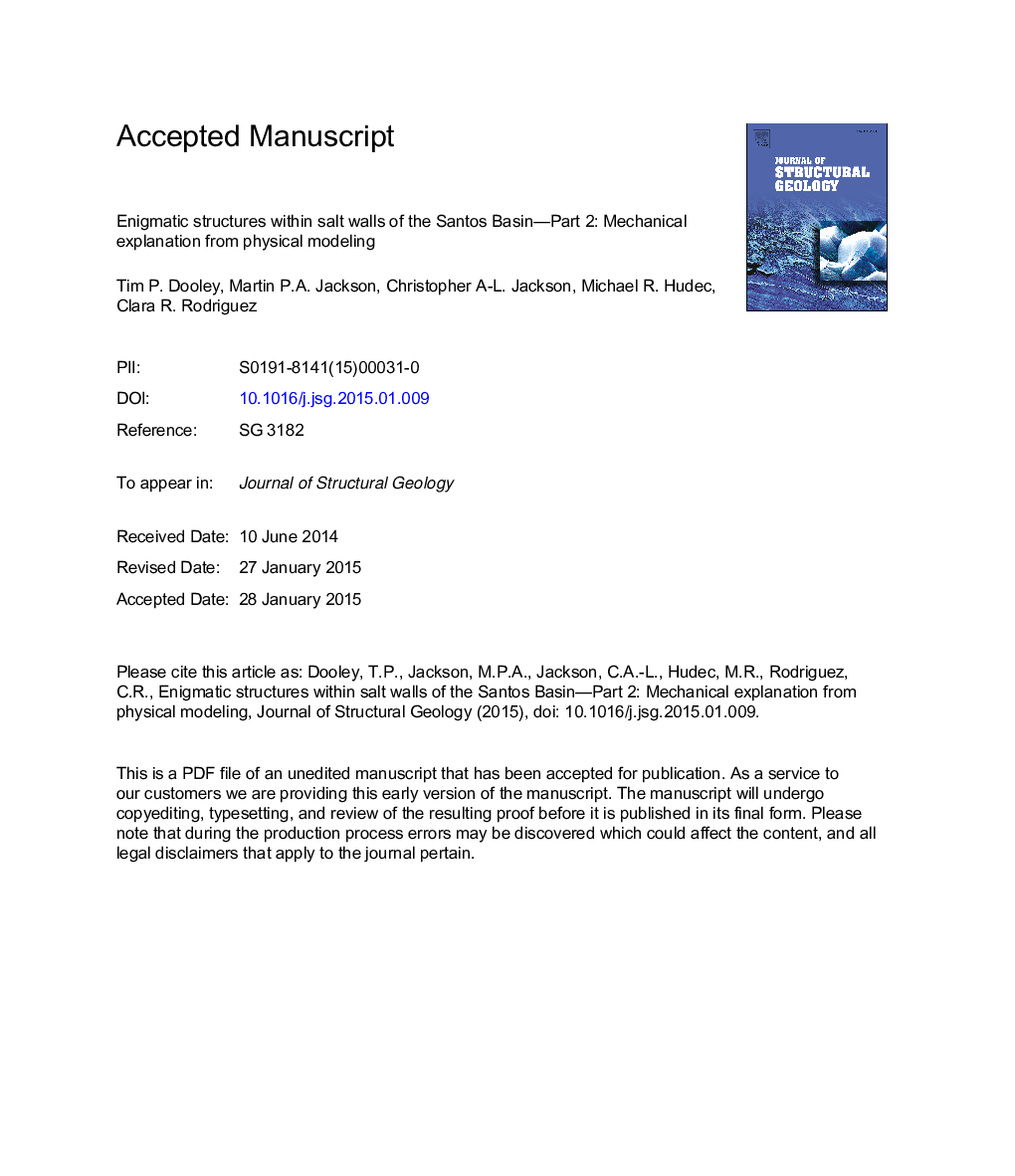| کد مقاله | کد نشریه | سال انتشار | مقاله انگلیسی | نسخه تمام متن |
|---|---|---|---|---|
| 6444804 | 1640505 | 2015 | 50 صفحه PDF | دانلود رایگان |
عنوان انگلیسی مقاله ISI
Enigmatic structures within salt walls of the Santos Basin-Part 2: Mechanical explanation from physical modelling
ترجمه فارسی عنوان
سازه های مبهم در داخل دیوارهای نمکی از حوضه سانتوس- قسمت 2: توضیح مکانیکی از مدل سازی فیزیکی
دانلود مقاله + سفارش ترجمه
دانلود مقاله ISI انگلیسی
رایگان برای ایرانیان
کلمات کلیدی
تکتونیک نمک دیپاریسم، رایلی تیلور، مدلسازی فیزیکی، حوضه سانتوس، برزیل،
موضوعات مرتبط
مهندسی و علوم پایه
علوم زمین و سیارات
زمین شناسی
چکیده انگلیسی
Jackson et al. (this volume) used 3D seismic reflection data to describe intrasalt deformation in salt walls in the Santos Basin. They focused on the origin of enigmatic allochthonous salt sheets of older evaporites (A1 unit) emplaced above overlying stratified evaporites (A2-A4 units). Their kinematic model incorporates: (i) initial inward flow and thickening of A1 salt within the rising wall, and arching of A2-A4 overburden; (ii) breaching of the arched overburden, ascent of mobile A1 evaporites along single or multiple feeders, and emplacement of upper-wall sheets or canopies; and (iii) a component of regional shortening within the salt. This companion paper uses physical modelling to explain how and why these structures occur and proposes a mechanical basis for the kinematic model. Our first two models simulated salt having uniform internal density, with walls growing by (i) initially symmetric differential loading and (ii) initially symmetric differential loading plus shortening. These models reproduced anticlines and injection folds seen in the simpler deformed walls in the Santos Basin. However, neither model reproduced the most complex structures within the Santos evaporites, which are: (i) allochthonous intrusions, (ii) steep feeders, and (iii) recumbent synclines. Thus, differential loading and shortening alone are insufficient to generate these complex structures. In our third model, a less-dense lower evaporite (A1) was overlain by denser upper evaporites (A2-A4), similar to the density structure found by Santos Basin wellbores. The wall rose solely by differential loading. In this model, A1 breached the overlying evaporites to form vertical diapirs feeding salt sheets and salt wings in the upper part of the salt wall. Breakthrough of A1 folded A2-A4 evaporites into recumbent synclines. Model sections closely resemble Santos seismic examples, suggesting that the key to forming these complex intrasalt structures is a density inversion within the evaporite sequence that creates a Rayleigh-Taylor instability.
ناشر
Database: Elsevier - ScienceDirect (ساینس دایرکت)
Journal: Journal of Structural Geology - Volume 75, June 2015, Pages 163-187
Journal: Journal of Structural Geology - Volume 75, June 2015, Pages 163-187
نویسندگان
Tim P. Dooley, Martin P.A. Jackson, Christopher A.-L. Jackson, Michael R. Hudec, Clara R. Rodriguez,
